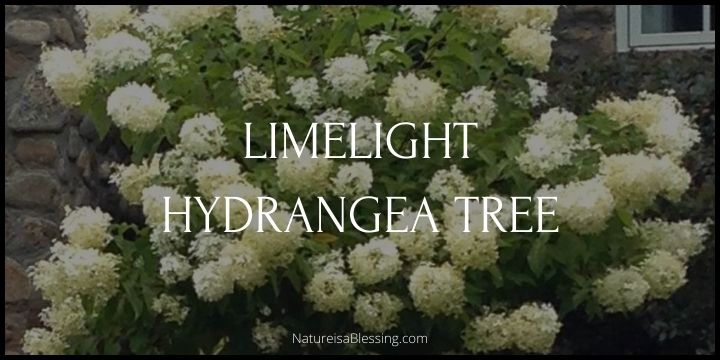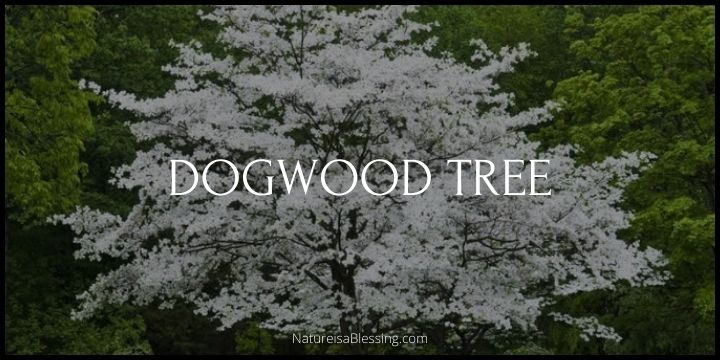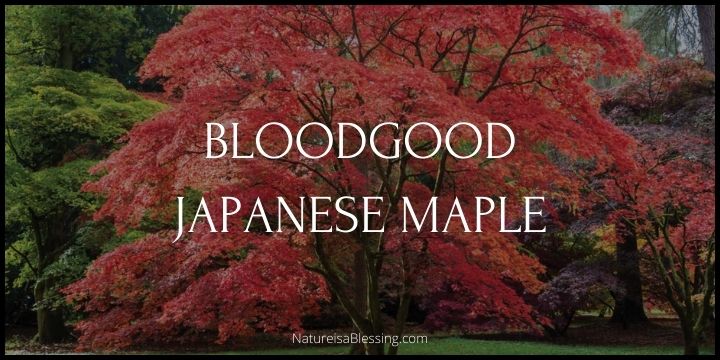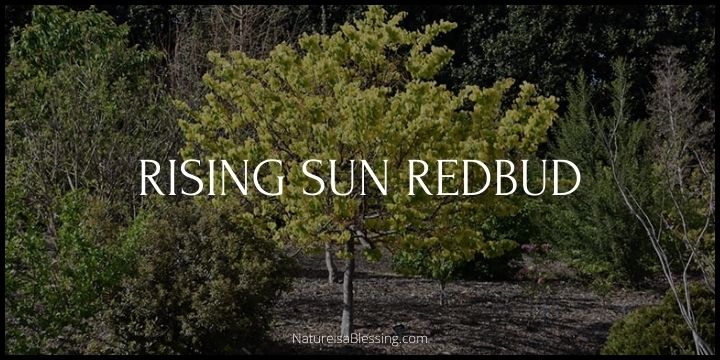Ruby Falls Weeping Redbud: How to Plant, Grow, and Care
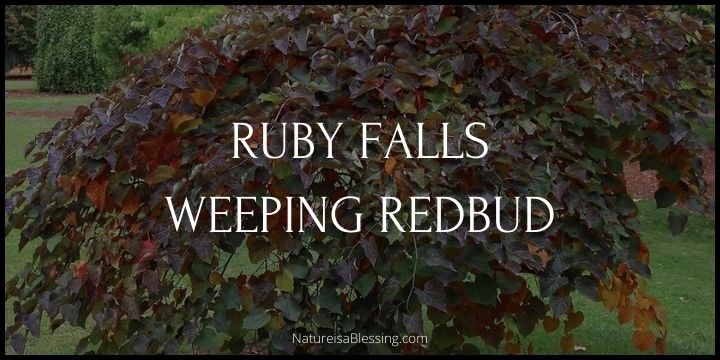
What is Ruby Falls Redbud?
The Ruby Falls Redbud, also known as Cercis canadensis ‘Ruby Falls’, is a spectacular specimen of nature’s artistry. This compact, deciduous tree is renowned for its unique weeping habit, which adds a distinctive charm to any landscape. Native to North America, this dwarf cascading beauty is a testament to the power of purple, making a significant impact even in small spaces.
What sets Ruby Falls Redbud apart is its striking foliage and beautiful blossoms. The heart-shaped leaves emerge deep purple, slowly fading to a dark green with purple hues as the seasons progress. In contrast, the sweet pea-like blooms burst forth in clusters of lavender-red during spring, providing a stunning spectacle that is hard to miss.
One of the most exciting features of the Ruby Falls Redbud is the contrasting play of colors. The reddish-pink blossoms perfectly offset the rich color of the foliage, creating a visual feast. Furthermore, it’s a small tree with a small root system, making it a safe choice for planting near homes or sidewalks without causing any issues with the foundation.
Finally, the Ruby Falls Redbud is more than just a pretty face. It’s a robust plant that requires low maintenance and has moderate water needs. Its drought tolerance and ability to thrive in different soil types make it a popular choice among gardeners.
In conclusion, the Ruby Falls Redbud is an excellent selection for those seeking to add a touch of drama and color to their gardens. Whether you’re an experienced gardener or a novice, this tree is sure to bring joy with its beautiful blossoms and unique weeping form.
Fast Facts About Ruby Falls Redbud
| Characteristic | Description |
|---|---|
| Origin | North America |
| Common Name | Ruby Falls Weeping Redbud |
| Botanical Name | Cercis canadensis ‘Ruby Falls’ |
| Family | Fabaceae |
| Plant Type | Deciduous Tree |
| Genus | Cercis |
| Mature Height | 6-8 feet |
| Mature Width | 4-6 feet |
| Sun Exposure | Full sun to part shade |
| Soil Type | Well-drained, sandy, clay, loamy |
| Soil pH | Acidic to slightly alkaline |
| Soil Drainage | Good drainage essential |
| Bloom Time | Early Spring |
| Attracts | Birds, butterflies |
| Maintenance | Low |
| Water Needs | Moderate |
| Native Area | North America |
| Drought Tolerance | Moderate |
| Characteristics | Weeping habit, heart-shaped leaves, purple-pink flowers |
| Suggested Use | Specimen, accent in borders, small gardens |
| USDA Hardiness Zone | 5-9 |
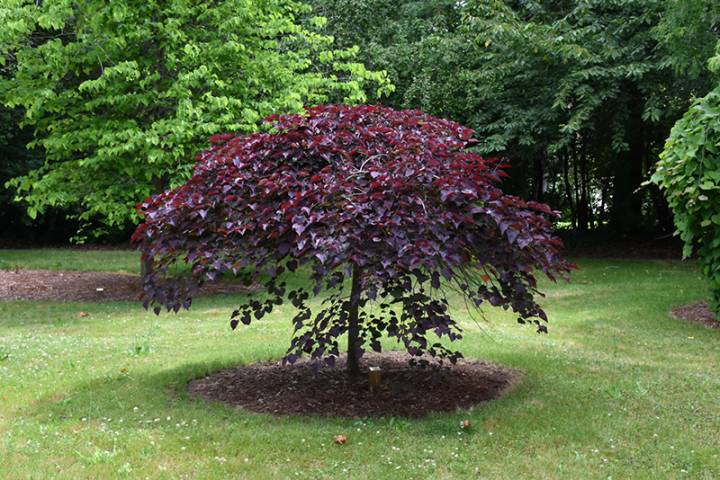
How to Plant and Grow Ruby Falls Redbud
The Ruby Falls Redbud is a true gem in the gardening world, known for its captivating cascading form and vibrant purple foliage. This unique weeping tree can transform your garden into a tranquil retreat, with its stunning heart-shaped leaves and delicate lavender-red blooms that herald the arrival of spring. Not only does it add a touch of drama to your landscape, but it also serves as a habitat for various birds and butterflies, enhancing the biodiversity of your garden.
Planting Time and Soil Requirements
The best time to plant the Ruby Falls Redbud is in early spring or fall. This timing allows the tree to establish its root system before the harsh weather conditions of summer or winter set in. As for the soil, this tree prefers well-drained soil that can be sandy, loamy, or clay. It is tolerant of a wide pH range, from acidic to slightly alkaline.
Preparing the Planting Hole
To prepare the planting hole, dig a hole twice as wide and as deep as the root ball of your Ruby Falls Redbud. This will give the roots plenty of room to spread and establish. Place the tree in the center of the hole, ensuring that the top of the root ball is level with or slightly above the ground surface. Backfill the hole with the original soil, firming it gently around the root ball.
Watering and Fertilization
After planting, water the tree thoroughly and continue to water it regularly, especially during dry spells. The Ruby Falls Redbud has moderate water needs, so ensure the soil is kept consistently moist but not waterlogged.
In terms of fertilization, a slow-release, balanced fertilizer applied in early spring can provide the necessary nutrients for the tree’s growth. However, avoid excessive fertilization as it can lead to lush but weak growth.
Pruning Techniques
Pruning is essential to maintain the attractive weeping habit of the Ruby Falls Redbud. The best time to prune is late winter or early spring before new growth emerges. Remove any dead, diseased, or crossing branches and thin out the canopy to allow light and air circulation.
Pest and Disease Management
Ruby Falls Redbud is relatively disease-resistant. However, it can be susceptible to canker diseases and verticillium wilt. Regularly inspect the tree for signs of disease such as wilting, yellowing leaves, or dark, sunken areas on the bark. If you spot any signs, consult with a local extension service or a professional arborist for appropriate treatment options.
As for pests, the tree can occasionally attract aphids or scale insects. These can be controlled with horticultural oils or insecticidal soaps.
In conclusion, with its stunning looks and easy-care nature, the Ruby Falls Redbud is an excellent addition to any garden. By following these guidelines, you can ensure that your tree thrives and provides beauty and enjoyment for many years to come.
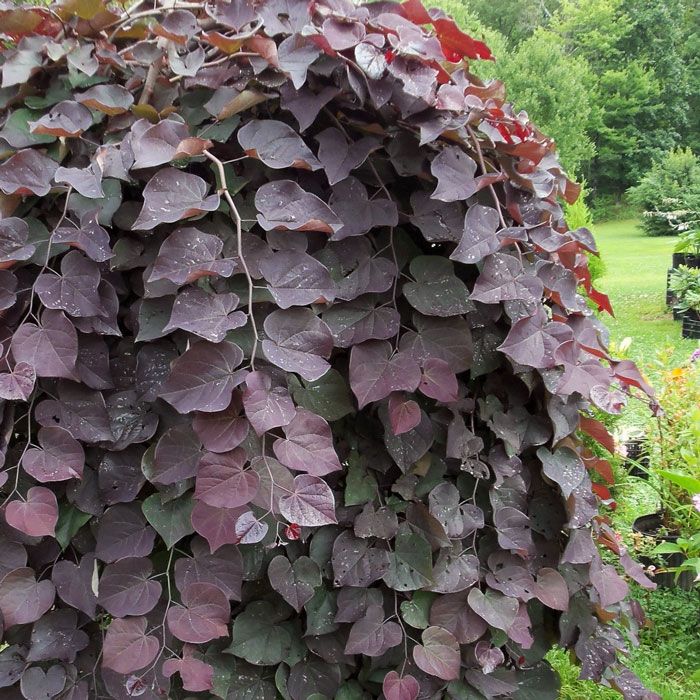
The 7 Unique Characteristics of Ruby Falls Redbud
- Weeping Habit: The Ruby Falls Redbud is known for its unique weeping habit, where the branches elegantly droop downwards, creating a stunning cascading effect that is not commonly found in most trees.
- Heart-Shaped Leaves: Another standout feature of this tree is its heart-shaped leaves. They start as a deep purple color and gradually fade to a dark green with purple hues as the season progresses.
- Colorful Blooms: In early spring, the tree produces clusters of lavender-red, pea-like flowers. These blooms appear before the leaves, creating a striking contrast against the bare branches.
- Compact Size: With a mature height of 6-8 feet and a width of 4-6 feet, the Ruby Falls Redbud is relatively compact, making it ideal for small gardens or spaces where larger trees wouldn’t fit.
- Drought Tolerance: Despite its delicate appearance, the Ruby Falls Redbud has a moderate level of drought tolerance. This makes it suitable for areas with varying rainfall levels.
- Attracts Wildlife: The Ruby Falls Redbud is not just a feast for human eyes. Its bright, sweet-smelling flowers also attract various species of birds and butterflies, enhancing the biodiversity of your garden.
- Year-Round Interest: From its vibrant spring blooms to its attractive summer foliage and its appealing winter silhouette, the Ruby Falls Redbud offers year-round interest, making it a valuable addition to any landscape design.
What are the Common Problems of Ruby Falls Redbud?
The Ruby Falls Redbud, while a generally robust and hardy tree, can experience a few common problems:
- Leaf Spot: This is a fungal disease that causes spots on the leaves. Affected leaves may turn yellow or brown and drop prematurely.
- Verticillium Wilt: This soil-borne fungus can cause wilting, yellowing, and browning of leaves, often on one side of the tree.
- Canker: This is a disease that causes dead areas on the bark of the tree. It can lead to branch dieback and can eventually kill the tree if left untreated.
- Pests: Certain insects like aphids, scales, and caterpillars can infest the tree, causing damage to leaves and branches.
- Environmental Stress: Drought, poor soil conditions, and extreme temperatures can also cause issues such as leaf scorch and stunted growth.
To prevent these issues, ensure the tree is planted in well-drained soil, watered regularly (but not overwatered), and pruned properly to maintain good air circulation.
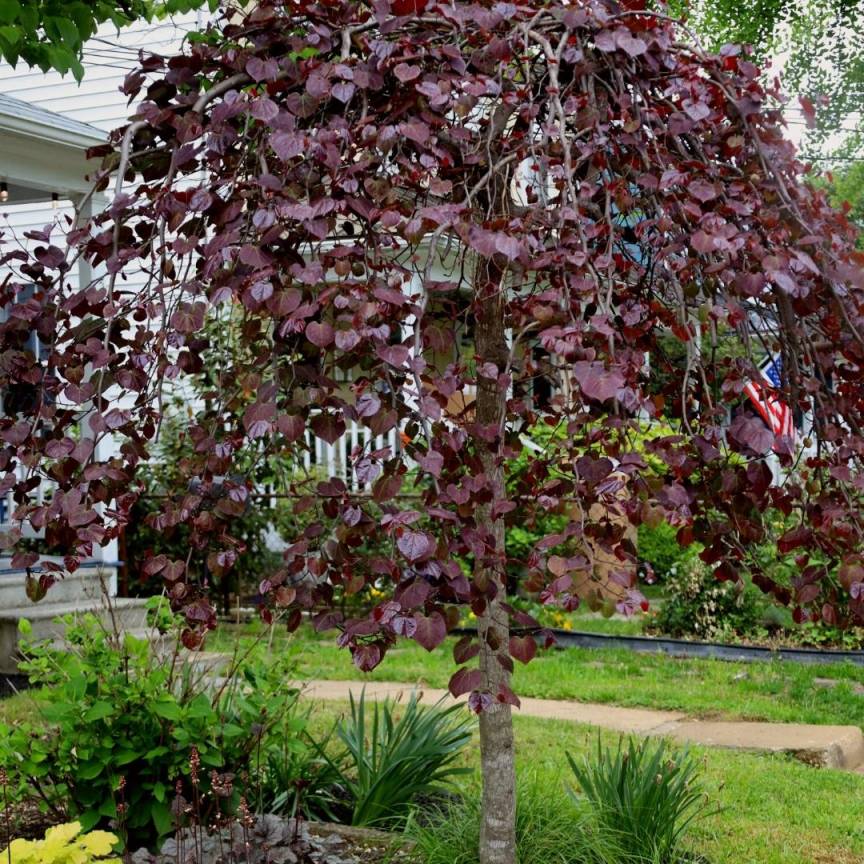
What Does Ruby Falls Redbud Symbolize?
| Symbolism | Explanation |
|---|---|
| Love | The heart-shaped leaves of the Ruby Falls Redbud are often associated with love and romance, symbolizing the deep affection one person has for another. |
| Renewal | The vibrant purple-red blooms that emerge in early spring symbolize renewal and the start of a new cycle of life. This makes the Ruby Falls Redbud a symbol of new beginnings and fresh starts. |
| Beauty | With its cascading branches and colorful foliage, the Ruby Falls Redbud is a symbol of beauty and elegance. It represents the appreciation of aesthetics and the allure of nature. |
| Resilience | Despite its delicate appearance, the Ruby Falls Redbud is surprisingly resilient, tolerating varying conditions from drought to different soil types. This resilience makes it a symbol of endurance and adaptability. |
| Harmony | The Ruby Falls Redbud, with its weeping form, provides a sense of tranquility and peace, symbolizing harmony and balance. |
| Growth | As a deciduous tree, the Ruby Falls Redbud goes through a cycle of growth, shedding its leaves in autumn and regenerating in spring. This cycle symbolizes personal growth and development. |
| Attraction | The sweet-smelling flowers of the Ruby Falls Redbud attract various species of birds and butterflies, symbolizing attraction and charm. |
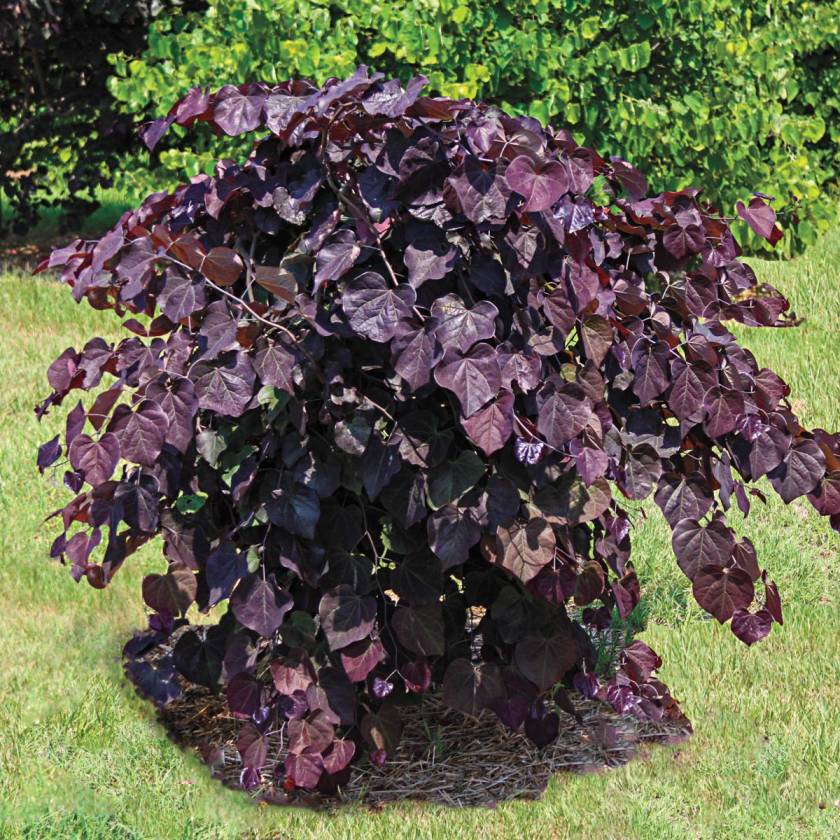
The Pros and Cons of Ruby Falls Redbud
Advantages:
- Stunning Appearance: With its weeping branches, heart-shaped leaves, and vibrant blooms, the Ruby Falls Redbud is a beautiful tree that adds an aesthetic appeal to any landscape.
- Easy to Care For: The Ruby Falls Redbud is relatively easy to care for, growing in full sun to part shade, and tolerating most soil conditions.
- Pest and Disease Resistant: This tree is resistant to many common pests and diseases, reducing the need for constant monitoring and treatment.
- Versatile Usage: The Ruby Falls Redbud can be used as a focal point in a garden, a patio tree, or even a window tree. It’s versatile and fits well into various landscape designs.
- Attracts Pollinators: The tree’s early-season flowers are an important source of nectar for pollinators, thus contributing to local biodiversity.
- Disease Resistance: Redbuds are hearty and disease-resistant trees, which makes them a great low-maintenance choice for your garden.
Disadvantages:
- Leaf Problems: Prone to leaves discoloration or wilting.
- Drought Injury: While the tree has moderate drought tolerance, prolonged periods of dryness can lead to drought injury.
- Adaptation Problems: The Ruby Falls Redbud may have difficulty adapting to certain environments or conditions, such as extreme temperatures or poor-quality soil.
Where to Buy Ruby Falls Redbud?
- Fast Growing Trees
- Planting Tree
- Brighter Blooms
- Amazon
- Lancaster Greenhouse
- Nature Hills
- Pixies Gardens
- Monrovia
- Sooner Plant Farm
7 Best Ruby Falls Redbud Alternatives
| Alternative | Explanation |
|---|---|
| Eastern Redbud (Cercis canadensis) | The Eastern Redbud is a close relative of the Ruby Falls Redbud and produces similar pink-purple flowers. It’s a great alternative for those who prefer a more upright growth habit |
| Forest Pansy Redbud (Cercis canadensis ‘Forest Pansy’) | This redbud variety features heart-shaped leaves that start out red in spring and turn to deep purple in summer. It’s an excellent choice for adding color to your landscape |
| Weeping Cherry (Prunus subhirtella ‘Pendula Plena Rosea’) | If you’re looking for a tree with a weeping habit but different flower color, the Weeping Cherry could be a good option. It has pink double flowers and a striking weeping form |
| Weeping Willow (Salix babylonica) | Known for its graceful, drooping branches, the Weeping Willow is a larger alternative to the Ruby Falls Redbud. It’s ideal for creating a dramatic focal point in a large garden |
| Lavender Twist Weeping Redbud (Cercis canadensis ‘Covey’) | This cultivar offers a slightly different look with its lavender-pink flowers and unique twisting branches |
| Oklahoma Redbud (Cercis reniformis ‘Oklahoma’) | The Oklahoma Redbud is known for its glossy, heart-shaped leaves and deep pink flowers. It’s a good alternative if you want a redbud with a more traditional, upright growth pattern |
| White Weeping Cherry (Prunus subhirtella ‘Alba’) | If you prefer white blossoms, consider the White Weeping Cherry. It’s a beautiful tree with a weeping form and delicate white flowers in spring |
Final Thoughts
The Ruby Falls Weeping Redbud is a true gem in the world of ornamental trees. Its distinctive cascading branches, heart-shaped leaves, and stunning springtime blooms offer unparalleled beauty. While planting and growing necessitates particular attention to sunlight, soil conditions, and watering, the effort is genuinely rewarding.
With proper care, including correct pruning and vigilant disease control, this tree will not only thrive but also transform your garden into an enchanting sanctuary. Care for a Ruby Falls Redbud is a gardener’s journey that culminates in the joy of witnessing its radiant beauty unfold with each passing season.
Also read:
- Flowering Cherry Tree: How to Plant, Grow, and Care
- Italian Cypress Tree: How to Plant, Grow, and Care
- Rising Sun Redbud: How to Plant, Grow, and Care
- Coral Bark Japanese Maple: How to Plant, Grow, & Care
- Blue Atlas Cedar: How to Grow, Plant, and Care
- Eastern Redbud Tree: How to Plant, Grow & Care
- Bloodgood Japanese Maple: A Symphony in Purple
